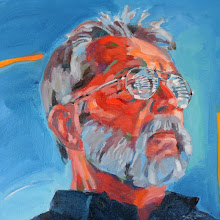For years now all the prints I have made in the darkroom have been Platinum prints. This is a process from the 1870s where you coat the 100% cotton paper with a Platinum/Palladium solution then expose it with the negative in UV light. It is then developed and cleared leaving an image that is composed of only the two metals. The long lockdown I have had a lot of time to experiment with prints. Online I found a reprint of a book from 1915 where a printer named Foley described making Platinum prints with not one but two or three exposures. This process gave him much better prints than others of his time.
Irving Penn is a well known fashion photographer that in the 1960s is credited with bringing back the Platinum printing process that disappeared after WW1 as all the metal went into the war effort. Some of his best prints were made with two or three exposures but he kept his process secret. It is most likely he he made highlight masks for his negatives although some think he used several negatives on different contrast. In any event we do know that he bonded his paper to an aluminum sheet which he pin registered to his negatives. Without having the paper bonded to aluminum the slight shrinkage of the paper would ruin the print and registration was necessary so that each negative would print in register with the others.
While Penn used film negatives that were enlarged to size on larger sheets of film, today we make negatives digitally. Platinum prints require negatives that are the same size as the print you intend to print. It seemed like it would be possible to make digital negatives to make prints using this Foley/Penn process.
The lockdown gave a lot of time to experiment with the process and this print is one of the first I have done. The paper is Hannahmule cotton paper and it is bonded to aluminum. The negative is printed on an Epson P800 with Epson inks on Pictorico film.

